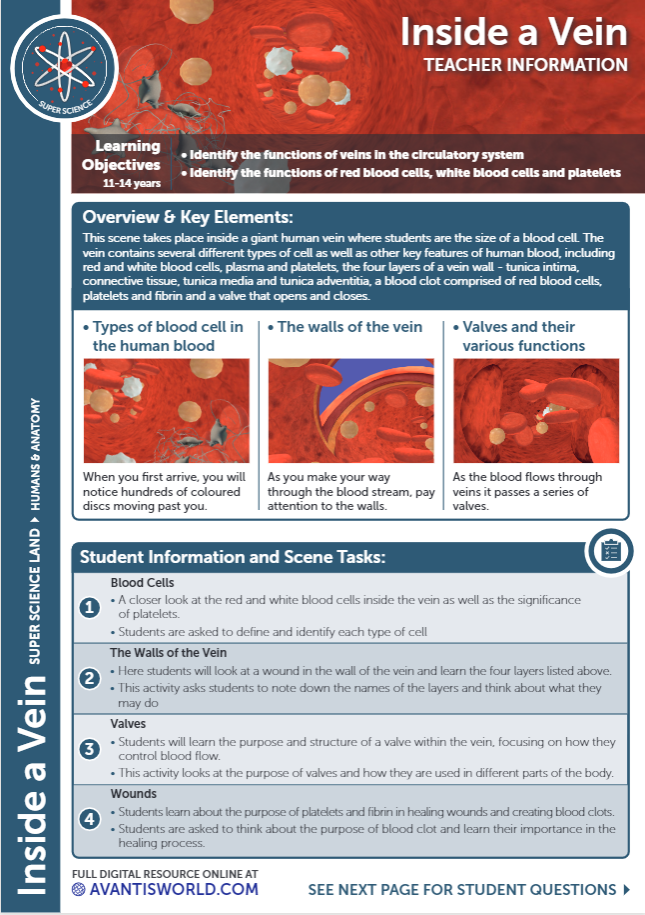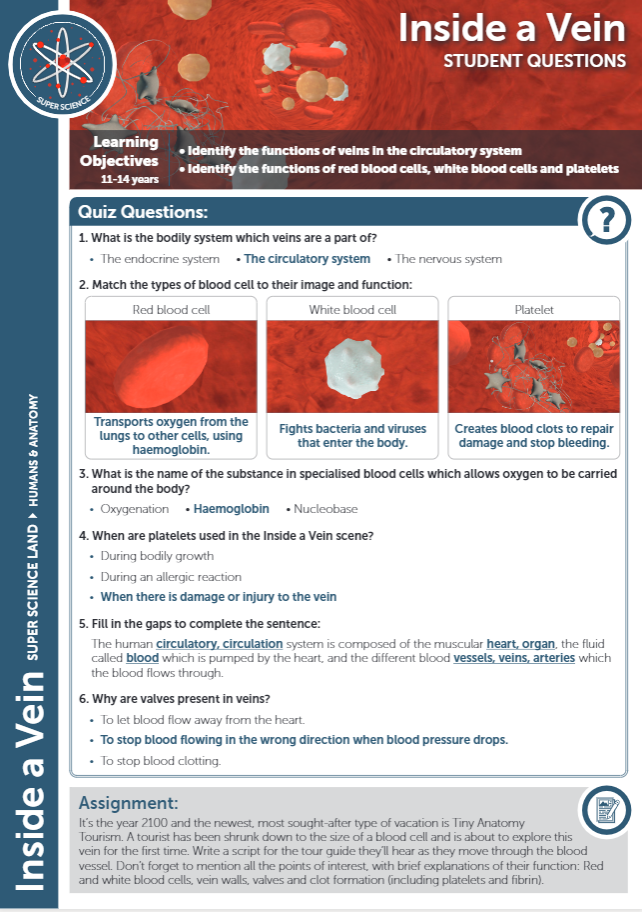 Loading...
Loading...
Initial language selection is based on your web browser preferences.
This scene takes place inside a giant human vein where students are the size of a blood cell. The vein contains several different types of cells as well as other key features of human blood, including, red and white blood cells, plasma and platelets, the four layers of the vein wall, how blood clots form and the structure and function of valves.
# Learning objectives
1: Identify the blood cells inside the vein and describe their function{.info}
2: Describe the structure of the vein{.info}
3: Explain how platelets prevent blood loss at a would{.info}
# Blood Cells{.objective .objective1}
In this section blood cells can be observed closely and red blood cells and white blood cells can be comparted to each other. Students will be able to explore and observe the different shapes of the blood cells as well as the platelets and learn about their function. Students should observe the different components of the blood and define what each blood cell does.
# The Walls of the Vein{.objective .objective2}
In this section the structure of the vein wall can be seen to made up four tissue layers: tunica intima, connective tissue, tunica media and tunica adventitia. The function of the tissue layers is understood to maintain the integrity of the vein, keep the blood enclosed within the circulatory system, and reduce friction as blood flows. Students should make a note of the tissue layers and find out what each layer is responsible for.
# Valves{.objective .objective3}
In this section it can be observed that blood flows quite slowly, meaning the pressure is low. In some areas of the body, this can lead to backflow of blood if it flows against gravity. The students will observe and define the purpose of the valves as preventing backflow when they close if blood starts to flow the wrong way. It is understood that the valves maintain blood flow in the correct direction: toward the heart.
# Wounds{.objective .objective4}
In this section the formation of blood clots can be described as the clumping of platelets with fibrin. Students can explore the scene and look at the area where the wound is being covered by a blood clot. By observing the formation, students should describe how platelets and fibrin forma clot.
# Teacher Resources
### Download Teacher Notes
[](https://data.avncloud.com/activities/735195/files/Inside%20a+vein+Teachers+Notes.pdf?date=1626101050&size=1300304&md5=19bf927ca7dfd67ab69d4693dad08245)
### Student Quiz Answers Document
[](https://data.avncloud.com/activities/735196/files/Inside%20a+vein+Teachers+Notes_03.pdf?date=1625842902&size=339512&md5=afab54712751049ce767e01035d8d310)
### Download Student Quiz Document
[](https://data.avncloud.com/activities/735197/files/Inside%20a+vein+Teachers+Notes_02.pdf?date=1625842951&size=699188&md5=e595f88e6fbdcf7c46938075bb414596)